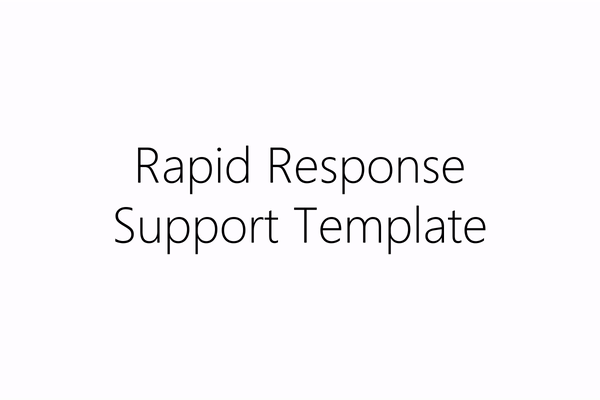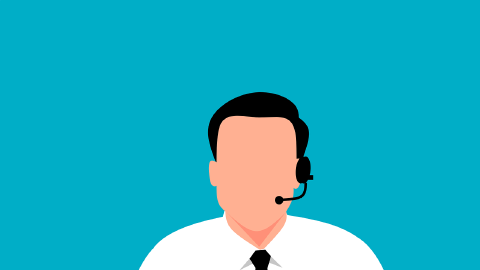The Ultimate Guide on Consumer vs Customer + Key Differences
Everything you need to know about the difference between consumers and customers, plus what it means for your business.
In the business world, two terms often get tossed around: consumers and customers. These terms may seem similar, but they have distinct meanings that can impact how a business operates.
Understanding who consumers and customers are can help a business tailor its products, services, and marketing strategies more effectively. The difference between consumers and customers is more than just semantics; it's about knowing who is actually interacting with your product or service and how to best serve them.
Customers open their wallets to make a purchase, but consumers are the ones who actually experience the product or service, shaping its reputation and future.
In this article, we'll cover everything you need to know about consumers and customers including what each is, examples of them, and the key differences.
What Are Consumers? (Definition)
A consumer is essentially anyone who uses a product or service. They are the end-users, the people who interact with the product after it has been purchased. Consumers can offer valuable insights into the quality, functionality, and overall value of a product or service. Their feedback, whether it's praise or criticism, can be instrumental in shaping future iterations of the product.
A consumer is the individual who actually uses or experiences a product or service, becoming the ultimate judge of its value and quality.
Consumers can be individuals, like a teenager using a smartphone, or they can be part of a larger group, like employees in a company using office software.
Importantly, consumers don't have to be the ones who actually bought the product. They are the beneficiaries, the ones who experience the product or service in action.
Examples of Consumers
Here are examples of real-world consumers:
Remote workers using a video conferencing tool that their company subscribed to.
Customers at a coffee shop enjoying free Wi-Fi provided by the establishment.
Social media users engaging with a brand's sponsored post, even though they didn't make a purchase.
Employees driving company cars for business-related tasks.
End-users of a cloud storage service within a corporation, where the IT department is the actual customer who bought the subscription.
Join 700,000+ who are using Text Blaze templates.
What Are Customers? (Definition)
A customer is the individual or entity that purchases a product or service. They are the ones who engage in the financial transaction that enables them to acquire the product. Customers are the lifeblood of any business because they provide the revenue that keeps the company afloat.
A customer is the person or entity that initiates the financial transaction to acquire a product or service, serving as the gateway to revenue for a business.
Customers can be individuals shopping for themselves or their families, or they can be businesses making purchases for their operations. They are the decision-makers, the ones who evaluate the options and choose to invest in a particular product or service. Unlike consumers, customers are directly involved in the buying process, from selecting the item to making the payment.
Examples of Customers
Here are real-world examples of customers:
A small business owner purchasing a subscription to accounting software.
A marketing team buying ad space on a social media platform.
An HR department investing in an employee wellness program.
A restaurant owner ordering kitchen supplies from a wholesale vendor.
A project manager acquiring a premium project management tool for team collaboration.
Differences Between Consumers and Customers
So, you're probably asking yourself, "what are the differences between consumers and customers?" Well, the main difference between consumers and customers lies in the transaction and usage. Customers are the ones who make the purchase, while consumers are the ones who use or consume the product. Sometimes they can be the same person, but not always.
Understanding this difference is crucial for businesses. It helps in targeting marketing efforts and providing support. For example, if you know your customers are parents but the consumers are children, your marketing strategies might include elements that appeal to both.
Here are the key differences between consumers and customers:
Involvement in Transaction
The first major difference between consumers and customers is their involvement in the transaction. Customers are the ones who initiate and complete the financial transaction to acquire a product or service. They are the ones who browse through options, make a selection, and finally pay for it. In essence, they are the gatekeepers who decide whether or not a product gets purchased.
Customers are the ones who initiate and complete the financial transaction to acquire a product or service, while consumers are the end-users who experience the product after the purchase has been made.
On the other hand, consumers don't necessarily have to be involved in the transaction process at all. They are the end-users who experience the product or service after the purchase has been made. They might not even be aware of how much the product costs or where it was bought. Their main interaction is with the product itself, not the purchasing process.
Role in Feedback and Product Development
Another key difference lies in the role each plays in feedback and product development. Consumers are often the best source of feedback for a business because they are the ones actually using the product or service. Their experiences, whether positive or negative, can provide valuable insights into how a product can be improved or modified. Companies often rely on consumer reviews and feedback for product development.
Consumers offer insights into the product's quality and functionality through their usage, while customers may provide feedback focused more on the transactional and purchasing experience.
Customers, while they may also provide feedback, are generally more focused on the transactional aspects. They might comment on the ease of the purchasing process, the friendliness of the staff, or the efficiency of the delivery service. While this feedback is also valuable, it usually pertains to the buying experience rather than the quality or effectiveness of the product itself.
Join 700,000+ who are using Text Blaze templates.
Target for Marketing Strategies
The third difference between consumers and customers comes into play in marketing strategies. Customers are usually the target for promotions, discounts, and advertisements that aim to encourage a purchase. Marketing teams focus on presenting the product or service in a way that convinces the customer to make a financial commitment. This could involve highlighting the product's features, offering special deals, or showcasing testimonials.
Customers are targeted with marketing that aims to drive purchases, while consumers are wooed with messages that highlight the product's usability and benefits, creating a dual strategy that appeals to both.
Consumers, however, might be targeted in a different way. Since they are the end-users, marketing aimed at them often focuses on how enjoyable, useful, or effective the product is. For example, if a toy is being marketed, the colorful, fun aspects might be highlighted to attract the child who will play with it, while safety and educational features might be emphasized to the parent who will buy it.
Support Needs
Lastly, the support needs for consumers and customers are usually different. Customers often require support that helps them make a purchase decision or complete a transaction. This could include information on various payment options, details about return policies, or help with navigating an online shopping cart.
Customers seek support for a smooth transactional experience, while consumers look for post-purchase assistance to maximize the product's utility, requiring businesses to offer tailored support for each.
Consumers, on the other hand, usually need post-purchase support. They might have questions about how to use the product, need help with troubleshooting, or want to understand how to take advantage of specific features. Support for consumers is often more detailed and product-specific, aimed at enhancing the user experience.
Support Needs: Transactions vs Post-Purchase Support
When it comes to support, customers and consumers have different focal points but share some common expectations. Customers are often in need of transactional support. They might have questions about payment methods, shipping timelines, or how to navigate an online shopping cart.
Customers' primary concern is to complete the purchase as smoothly as possible, and they appreciate support that makes this process effortless. Businesses can meet these needs by offering detailed FAQs, live chat support, or even a helpline dedicated to transactional queries.
Whether it's a customer stuck at the online checkout or a consumer struggling with a product feature, quick and effective support can make all the difference in their overall satisfaction.
Consumers, on the other hand, are more likely to seek post-purchase support. After acquiring a product or service, they may encounter questions about its functionality, or they might run into issues that require troubleshooting.
For example, a consumer who has just bought a new laptop may need help with the initial setup, software installation, or understanding how to use specific features. To address these needs, businesses often use ticket routing to effectively address these issues.
By understanding these nuanced yet overlapping support needs, businesses can tailor their customer service strategies. This ensures that both consumers and customers feel well-supported and valued, from the initial transaction all the way through to ongoing product usage.
How to Improve Customer Support With Automation

High-quality customer support is crucial in 2023, and one method to improve support is through automation. If you're looking for a way to improve your support, give Text Blaze a try. With Text Blaze, you create intuitive text templates that can be inserted anywhere online.
Using Text Blaze, you can create templates for accurate and effective communication with consumers and customers alike. Text Blaze helps you automate repetitive typing (like emails) and still maintain your personal touch with placeholders, dynamic logic, and formulas, which help you create powerful templates.
With just a few keystrokes, you can improve your customer support, respond faster, and get more done. Check out the video below to learn more!
Join 700,000+ who are using Text Blaze templates.
Consumer vs Customer: Debate Settled
Understanding the difference between consumers and customers is essential for any business. While customers are the ones who make the purchase, consumers are the ones who actually use the product or service. Knowing this can help businesses tailor their marketing efforts and support services to better meet the needs of both groups.
Use Text Blaze to automate repetitive typing, improve your support (consumers or customers), and save time today.




